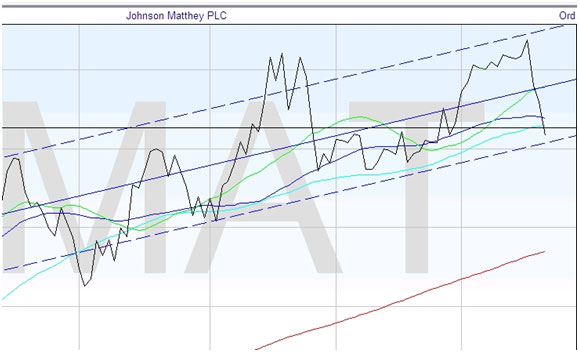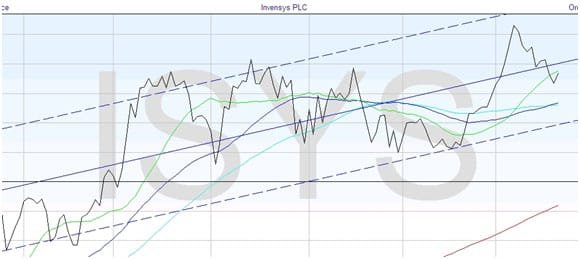The Basic Principles: The Six Tenets
You’ll find that the principles that Dow discovered are still considered valid and useful. As much work as has been done on technical analysis in more than 100 years, the basics still apply. Here are the six principles that were compiled from his essays.
The Six Tenets
- The averages reflect everything that can be known about a price. This should sound familiar, as it is merely stating the first tenet of technical analysis given above, as applied to averages. Even when unknowable events such as natural catastrophes occur, the markets will move quickly to assimilate the events into the prices.
- The markets exhibit three types of movement. The primary movement or trend lasts from a year to 28 to 33 months or longer. The secondary movement lasts from three weeks to three months, and is a retracement of 1/3 to 2/3 of the primary trend. The third movement is a minor trend, which represents a fluctuation which lasts less than three weeks.
- Primary movements have three phases. Dow identified three distinct types of buying (or selling, in a bear market) during a major trend. These are discussed in greater detail below.
- It takes both the DJIA and the DJTA to confirm a trend. This tenet was mentioned above. Dow did not consider a trend to be established unless both the industrial and transport averages were moving in concert. Similarly, he considered the current trend continuing until both of the averages reversed. This confirmation did not have to happen on the same day, but the confirmation is considered stronger the closer together the two signals are. If the averages did not agree, the prior trend was still valid.
- Volume should increase in the direction of the trend to give confirmation. Dow recognized the importance of volume in confirming the strength of a trend. While a secondary indication, if the volume did not increase in the direction of the trend, this was a warning sign that the trend may not be valid.
- A trend continues until a clear reversal. The opposite view to the Random Walk Theory, this tenet is the basis of many trading strategies to this day.
You can see the types of movement mentioned in 2. in the previous figures, which showed it in a simple form. The price makes a run, only to run out of breath, as it were, and sag back a little. If the trend is good, after a little rest the price resumes its trend, going further than it got to last time before the next retracement. Now you have the concept, here are a couple of real charts showing the principles.

Here’s a chart of Johnson Matthey PLC, symbol JMAT, which shows an uptrend. Don’t worry too much about all the other lines at this stage, you will learn about them as we go along. This uptrend has successively higher high points, and successively higher low points, satisfying Dow’s definition. There is some dithering on the right half of the chart, but the uptrend continues to the right fairly strongly.
Sometimes people get confused by the term ‘trading sideways’, so here is an actual example of such a chart.

You can see that the price at the left is increasing steadily, but in the middle section of the chart you are not getting higher highs and higher lows. On the right, the price seems to be resuming its uptrend, but the middle is clearly an example of trading sideways. The price is not making any real progress up or down.
That’s not to say that some people would not find trading opportunities in this section of the chart. However, you will usually find the better percentage trades when going with the trend. We’ll talk about it later, but it’s interesting to note that the retracement tends to go to one of several possible distinct levels before the price turns around and the trend continues.
The Dow Theory encapsulates the idea of cycles or waves in market prices. This idea will be considered and elaborated on later when discussing the Elliott wave theory. In an uptrend the price does not rise continuously, but will fluctuate up and down day by day, even while the general direction is upward. An uptrend therefore is defined as successively higher peaks in the price, coupled with successively higher low points.
The secondary movement is in the opposite direction to the trend, and may result in a retracement of the previous gains of up to two thirds, although commonly you may see about a 50% retracement. These are characterized as corrections to the trend, dampening the enthusiasm which is beginning to run rampant. These are some of the most difficult actions to interpret, as a movement against the trend may not be a simple retracement, but actually the beginning of a reversal in the market against the trend. Trends and how to recognize them are discussed in the third module.
The three phases, mentioned in Tenet 3, are related to human psychology and the subsequent actions of traders and investors. For example, in an uptrending bull market the initial phase is called the ‘accumulation’ phase, and represents the best informed investors determining that the stocks are a good buy. The second phase, which may continue for some time, occurs when buyers notice the rising prices and decide to follow the trend. Business appears good, and volume of buying increases. As this is when the majority of people jump on the bandwagon, it is called the ‘public participation’ phase.
Eventually, however, the enthusiasm turns to unbridled speculation, and the demand for the stocks reaches a level which is based more on hope than on the facts. At this stage, the informed investors who were in at the beginning of the trend start to sell and realize their profits. While the pundits are still extolling the virtues of the shares, the cognoscenti realize that the end of the trend is near, and quietly sell in the third or ‘distribution’ phase.
These three phases are all represented by an uptrend from its beginning to its end, and just looking at the price on the chart will not easily tell you which phase the price is in. If it was that easy, no one would be left holding a stock as the price reversed. However, technical analysis can be used to help us understand how people are feeling about the stock, and you’ll learn all about that in future modules.
In a primary bear or falling market, the first phase, according to Perry Greiner writing about the Dow Theory in the Encyclopedia of Stock Market Techniques in 1965, represents ‘the abandonment of hopes upon which stocks were purchased at inflated prices’. The second phase again is the chief part, where shares are sold due to disappointing corporate sales and earnings. Finally, the third phase is panicked or distressed selling, almost regardless of price, just to get out of the shareholding.
You can see that which of the three phases the price is in can be very important. Ideally, you’d like to get in at the accumulation phase, as then you stand to gain the most profit. It’s in the nature of things though that you may not join until the public participation phase, and that too is okay. Once you recognize that the distribution phase has begun, you need to be prepared to close your position quickly. What you want to avoid is joining in so late that you buy during the distribution phase, as there may be little to be gained and there is a much higher risk of the stock reversing and the price falling.


Join the discussion